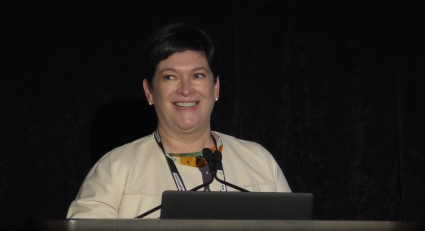Let’s get straight to the point: the current way of working is killing planning. Maria Rey-Marston, Accenture’s Global Supply Chain Innovation Leader, believes that if we continue to rely on fragmented, manual, spreadsheet-driven processes for demand and supply planning and sales and operations execution (S&OE), we are not only wasting human effort, time and ingenuity — we are also losing the people willing to do this kind of work, further contributing to the skills and talent gap seen in this field.
 In her presentation at Kinexions ‘22, Rey-Marston highlights the fact that the typical way of doing things is based on data that is low in accuracy, tedious processes that have too many hand-off points and workarounds, and technologies that merely replicate what is already done manually. The result: static, siloed operating structures that continue to utilize poor analytics with low visibility across the supply chain and weak explanatory power when making planning decisions.
In her presentation at Kinexions ‘22, Rey-Marston highlights the fact that the typical way of doing things is based on data that is low in accuracy, tedious processes that have too many hand-off points and workarounds, and technologies that merely replicate what is already done manually. The result: static, siloed operating structures that continue to utilize poor analytics with low visibility across the supply chain and weak explanatory power when making planning decisions.
Rey-Marston points out that despite all the technological advances available to them, 92% of all supply chain planners surveyed by Accenture still rely on Excel spreadsheets and 72% of them do not trust the data they are working with.
"We see it every day," she says. "We are not delivering on the promise of technology and, clearly, we’re not getting the best of human ingenuity."
Rethinking fundamental planning assumptions
In business, rules and heuristic approaches have continuously been underpinned by two fundamental assumptions: demand is unknown and capacity is limited. Today's technologies, however, have upended that concept.
"We need to reconsider our assumptions," Rey-Marston says, citing how businesses now have more sensors and more data at their disposal than ever before, giving them the visibility needed to make fairly accurate demand forecasts. "I am not saying that all businesses know their demand, but technologies today make demand knowable."
The same is true for capacity. While there are challenges businesses always need to contend with, such as constraints in transportation, inflation and availability, there are also innovative alternatives — logistics outsourcing and processes-as-a-service, to name two examples — that make capacity less constrained than ever before.
Organizations should therefore not only rethink traditional rules and assumptions, but also the tools they use and the way they can leverage technology and data to make decisions.
The future of supply chain planning
Many companies have already done exactly that to great benefit. Uber and Airbnb, for example, have automated their sales and operations planning (S&OP) processes with real-time data information and visibility into capacity, backed by continuous, real-time monitoring.
Accenture envisions the future of planning will be powered by real-time visibility and analytics with continuous, integrated and connected processes. This will help businesses deliver better customer experiences and lower costs all around — and most importantly, leverage technology and human ingenuity to their full potential.
For more on advanced demand and supply planning, watch The future of planning and visibility.




